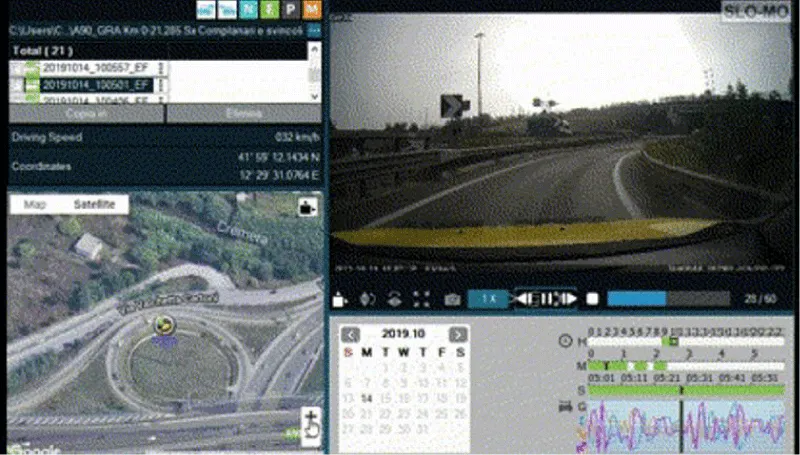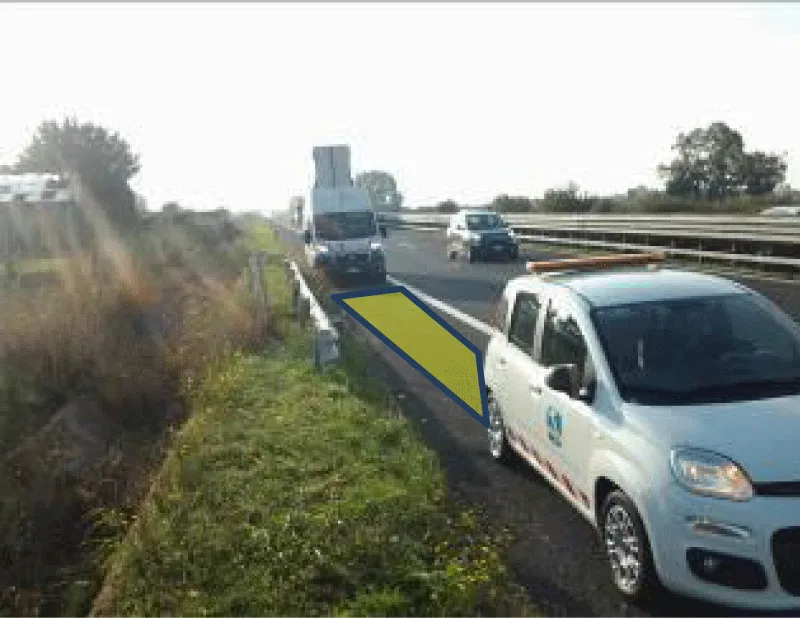Journal of Civil Engineering and Environmental Sciences
Road safety inspections: Basic principles
Carlo Polidori*
Cite this as
Polidori C (2023) Road safety inspections: Basic principles. J Civil Eng Environ Sci 9(2): 087-089. DOI: 10.17352/2455-488X.000074Copyright License
© 2023 Polidori C. This is an open-access article distributed under the terms of the Creative Commons Attribution License, which permits unrestricted use, distribution, and reproduction in any medium, provided the original author and source are credited.Some European Union Directives which were implemented by the various Member States, have established the fundamental guidelines for safety inspections of road infrastructures, according to the principle of the independence of the inspectors with respect to both the owner of the infrastructure and of its manager. This article addresses the practical implementation of the guidelines based on some inspections carried out on motorway sections in Italy.
Introduction
Road safety inspections are carried out in accordance with the national guidelines and technical specifications, complying with the EU Directive [1,2] provided to the inspector at the time of assignment, which specifies in detail how the inspection is to be carried out and how the results must be returned to the Client.
Regardless of the different specifications that may be contained in the guidelines, the conduct of a road safety inspection can be divided into four general phases:
- Phase 1 - Preliminary office work
- Phase 2 - Field study
- Step 3 - Inspection Report
- Phase 4 - Transmission of the Inspection Report and Feedback from the Client
In phase 1, the inspection team is defined, which in current practice in many European and non-European countries is composed of three people (a Team leader, who is the qualified inspector [3] formally in charge, a Senior Inspector, and a Junior Inspector, where these terms indicate the seniority of experience in the specific field of inspections). If there is not a team, but a single inspector, it will be necessary to have more technical equipment to make up for the lack of human support, as specified below.
Everything necessary to correctly perform the inspection to be carried out on site is then prepared, and all available information on the road section to be inspected is collected, such as:
- The function of the road: type of road and its classification, data on traffic flows and composition (percentages of heavy vehicles) and accidents, possible use by vulnerable users.
- Design drawings, and any other document useful for planning the inspection.
If these data are not provided in whole or in part by the Road Manager (this is a critical issue detected in some cases during the inspection campaigns), the client must be notified and then supply to the lack of information with internet searches, possibly also using the functions of Google Earth and Google Street View, paying attention to the date of the survey shown at the bottom right. The inspection report will highlight the difference between the data provided by the Road manager and those retrieved by the inspector in other ways.
Once the above data has been retrieved, it will be possible to identify “a priori” a series of “critical points” such as junctions and level intersections, points with recent accidents with fatalities, points with high concentrations of non-fatal accidents, and any other point deemed worthy of particular attention on the basis of the analysis of the available documentation.
In phase 2, a general day and night inspection is carried out first, and then a series of punctual inspections at critical points.
The general inspection consists of driving at a reduced speed in both directions along the road section under analysis, also taking video and georeferenced pictures. This inspection must be repeated at night with the same video and photographic recording tools.
It is useful to use special camera systems equipped with GPS, microphone, and accelerometers to be mounted on the front windshield of the vehicle: these return in multiple screens both the video with the data and the movement of the vehicle on the satellite map synchronized with the video. An additional panel provides lateral and vertical acceleration data, as shown in the following Figure 1.
This tool, also equipped with a microphone that allows recording voice notes that are then returned at the point where they were taken (audio track in the video and position on Google Maps satellite version), is indispensable in the case of a single inspector (without the team’s support).
During the general inspection (during which the vehicle does not stop), additional critical points considered as potentially dangerous are noted based on the objective judgment of the inspection team. In this regard, it should be pointed out that compliance with the legislation does not automatically imply compliance with objectively measured safety; therefore, the inspection must highlight any possible situation that may affect the safety of road users, also considering the so-called “Vulnerable Users” (cyclists and pedestrians) in cases where they have access to the road under analysis. During the general inspection phase at night, particular attention must be paid to the lighting conditions of junctions and entry points.
At the end of the general inspection, the video and photos are analyzed and discussed (within the team [4]) to decide whether or not to confirm the additional critical points noted.
The punctual inspection will be carried out at all critical points of the previously prepared list, stopping on the spot and analyzing the situation: for this purpose, it is essential to be accompanied by an escort vehicle provided by the Road Manager, equipped with flashing lights and everything necessary to ensure the safety of the operations: in addition, each member of the team must wear the regulatory reflective vest and scrupulously respect the limits of the area protected by the aforementioned vehicle; An example of such an area is highlighted in yellow in Figure 2.
In phase 3, the inspection report will be drafted in accordance with the procedures indicated and with the annexes required by the technical specification provided at the time of the assignment; in any case, there will be an introduction clearly describing the general information on the road section inspected, the members of the inspection team and all the data collected during the preliminary work in the office (phase 1); there will also be a brief summary of the activities carried out. The introduction made in this way will also allow any person not initially aware of the inspection activity to know the context of the inspection and consequently to understand the meaning of the proposed safety solutions.
The final part of the inspection report is dedicated to mitigation proposals for each of the critical points described; priority must be given to those “light” solutions such as signs, lighting, rumble strips, etc., which can be applied in a very short time because these are the most effective ones in terms of increasing safety. Solutions that require design, authorization procedures, and construction of works, given the long time required and the possible changes during their process, are not effective in the short and medium term in terms of the number of accidents avoided and should only be considered for problems that cannot be overcome with other solutions. Each mitigation proposal must be assigned a priority that considers both the severity of the situation at the critical point under consideration and the effectiveness of the proposed solution: this will allow the interventions to be carried out on the road rat, in question, to be prioritised.
In phase 4, the report is sent to the client, who forwards it to the Road Manager; after a reasonable time needed to analyse the report and discuss it internally, a meeting should take place between the Client, the Inspector, and the Road Manager, where each critical point is examined together with the proposed mitigation solution. This is a fundamental moment in the entire inspection activity, as the best road safety solutions should arise from this adversarial process on the basis of the experience of the inspectors and on the Road Manager’s knowledge of the infrastructure and its “history”. The minutes of this final meeting will also contain the counter-arguments of the Road Manager, which could also reject some of the analyses and solutions proposed by the inspectors, or even just the priorities assigned, without agreeing with them. In the event of rejection, this should be adequately motivated and argued. The client, who in most cases has the final word on the matter, will thus have all the elements for the final decision on each mitigation proposal.
It should be noted that the most critical issue that emerged in some inspection campaigns was precisely the absence of phase 4 previously described. This step is out of the control of the road inspector, who is usually appointed by the road owner; the only possible countermeasure from the inspector’s side is to clearly specify (in the preliminary report or the appointment acceptance letter) the importance of the final meeting and specifically ask for it.
Conclusion
The basic principle of the practical application of road safety inspections according to the EU Directives have been exposed, together with some best practices and highlighting the major issues and the possible countermeasures.
- Directive (EU) 2019/1936 of the European Parliament and of the Council of 23 October 2019 amending Directive 2008/96/EC on road infrastructure safety management. https://eur-lex.europa.eu/legal-content/EN/TXT/PDF/?uri=CELEX:32019L1936
- Directive 2008/96/EC of the European Parliament and of the Council of 19 November 2008 on road infrastructure safety management. https://eur-lex.europa.eu/legal-content/EN/ALL/?uri=celex%3A32008L0096
- Polidori C. European common standardized certification methodology for road safety experts. Transport Research Arena. 2012. https://www.researchgate.net/publication/236178846_European_common_standardized_certification_methodology_for_road_safetyexperts
- Adesyiun A. Effective and Coordinated Road Infrastructures Safety Operation. Transportation Research Procedia. 2016; 14: 3304-3311. https://doi.org/10.1016/j.trpro.2016.05.278
Article Alerts
Subscribe to our articles alerts and stay tuned.
 This work is licensed under a Creative Commons Attribution 4.0 International License.
This work is licensed under a Creative Commons Attribution 4.0 International License.




 Save to Mendeley
Save to Mendeley
